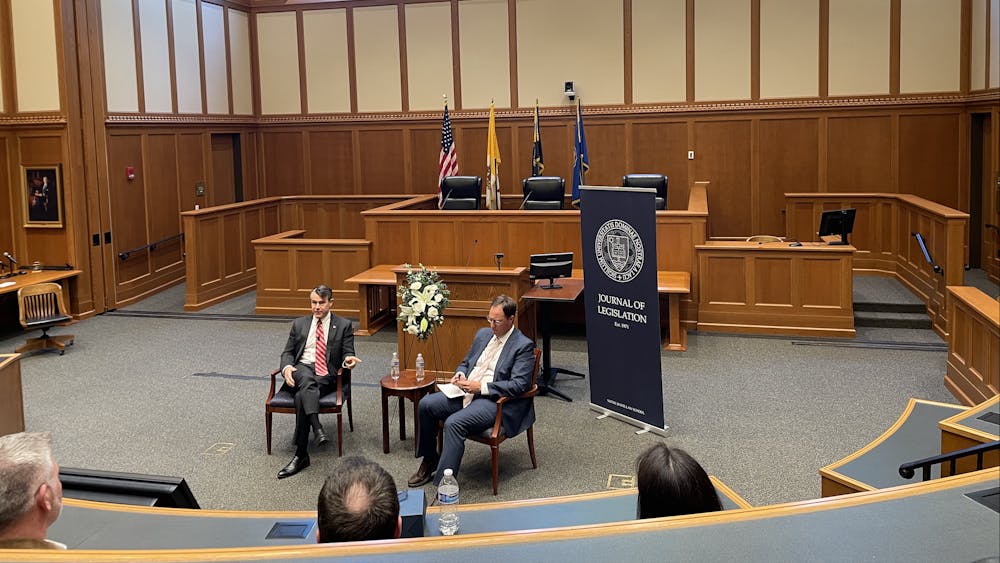Professor of physics Mitchell Wayne, a member of the High Energy Physics group, received a $4.3 million award from the National Science Foundation to fund work at the European Organization for Nuclear Research (CERN) laboratory near Geneva, Switzerland, according to a press release.
The funding will support the Phase I upgrade of the Compact Muon Solenoid (CMS) detector at the Large Hadron Collider (LHC) at the laboratory, the press release said.
“The basic theme of our research is to try to understand what the fundamental building blocks of the universe are, and how they combine to make up the things that we see," Michael Hildreth, also a professor of physics and member of the High Energy Physics group, said. "CMS is a specific project at CERN running at the Large Hadron Collider. CMS is a large particle detector that observes proton-proton collisions at the LHC."
The LHC is a circular accelerator with a 16-mile circumference that collides beams of protons at extremely high energies, Wayne said. The CMS detector is an apparatus, made up of several sub-detectors, that precisely measures the particles a high-energy proton collision creates.
“Our goal in particle physics is to study the structure of matter and the basic forces that govern how matter behaves, at the most fundamental level,” he said. “One of the ways we do this is by measuring the products of the collisions of particles, like protons, at very high energies. The higher the energy, the deeper we can probe into the nature of matter. Higher energy also gives us more ability to create and discovery new particles that can only be created in our experiments.”
The High Energy Physics group works with graduate students and other scientists from around the world to analyze and manage data collected at CERN, Wayne said. With the grant, they will now become involved with upgrading the CMS detector at CERN.
“A significant part of the $4.3 million will be used to purchase new photo-detectors, called Silicon Photomultipliers (SiPM) for part of the CMS detector known as the Hadronic Calorimeter, or HCAL," Wayne said. "These are a new technology that will perform much better than the photo-detectors currently in place at CMS.
"The testing and installation of these devices, about 16,000 in total, will take place at CERN. Here at Notre Dame we will be fabricating several hundred optical decoder units, or ODUs. These use fiber optics to bring signals of light created in the HCAL to the new photo-detectors.”
Many American universities and laboratories are working together on the upgrade, Wayne said, but only eight U.S. universities received their funding from the National Science Foundation, after writing a “cooperative agreement” proposal. The eight schools received a total of $11.5 million, but Notre Dame received the largest part of it, at $4.3 million, Wayne said.
“[The award] enables Notre Dame to play a leading role in the upgrade project, which is great for the visibility of Notre Dame as a leading research university," he said. "The work we are doing is really key for a successful upgrade of the CMS experiment, so our efforts are recognized by collaborators from around the world."
The award will also be used to support the salaries of the High Energy Physics group’s engineers and technicians, Wayne said.
“The past few years have been a difficult time for research funding in the U.S. … so it is especially gratifying to get this significant award for our research," he said. "We are very appreciative of the support from the NSF and we are also thankful for all the help provided by Notre Dame’s Office of Research and the College of Science in getting this award."













